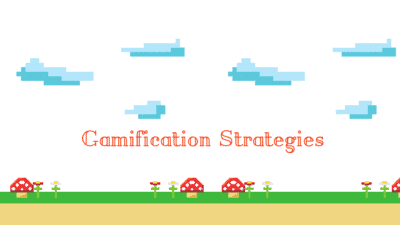The Best Interactive Content Tools to Use

So, you’re sold on interactive content. Now what?
Since you’ve decided to make your content more engaging, let’s explore the best ways in which to do this. The next step in your content journey is to find the right tool to build your interactive content. This can be difficult, as the interactive content market is still fairly new. There are dozens of options to choose from, but we’re going to look at the ones suitable for B2B marketing use.
Disclaimer: This article is biased only in the sense that these are my opinions. I’m not being paid by any of these vendors to promote their product. I simply researched interactive content tools, found my favorites, played around with some of them, and hope to save you time looking for a solution.
Without further ado, let’s take a look at several interesting interactive content tools.
Subscription-Based Interactive Content Tools
Ceros
Let’s start with Ceros. Ceros is an interactive content tool used for turning content into interactive experiences. It’s a platform not unlike Adobe’s Creative Suite in that nothing is coded and it’s meant to be used by graphic designers. If you’re looking to take eBooks or white papers and turn them into captivating experiences, Ceros is absolutely the most well-built solution.
From a B2B perspective, the results clients see with Ceros is impressive. One marketing agency turned a static piece of content (that was seeing a 3 percent conversion rate) into an interactive guide that exceeded a 30 percent conversion rate. Here are some case studies if you’re interested in diving deeper.
As for the creation aspect, Ceros has a library of templates to work from. You also have the ability to create your own. Users report that the creation process is quite time-intensive, and the combination of this plus the high price point ($3,000/mo for the basic package) disqualify most SMBs.
For your viewing pleasure, I’ve pulled together some of Ceros’ interactive content examples that work to:
- Increase demo sign-ups
- Explain a concept
- Set up a case study/success story
- Liven up a resources page
- Improve event registrations
- Make eBooks pop
If you’re an enterprise and/or have a graphic designer on staff, consider looking into this solution. If not, there are some alternatives below.
SnapApp
SnapApp is another content creation platform. Their examples, while interactive, have more design restrictions. From the reviews I’ve read, it’s clear that graphic designers tend to prefer Ceros to SnapApp. To be fair, much of the same functionality can be found in both products, so it’s worth looking into this platform if you’re also considering Ceros.
SnapApp targets the B2B market, and they tout improving lead qualification for demand generation marketers. Their motto? “Lose the gate, not the leads.”
User reviews generally agree that the tool allows for marketing growth, but the software is “not as flexible in design and functionality as it could be.” The pricing is comparable to Ceros. The basic package starts at $2,400/mo.
Infogram
Infogram is like Canva, but for interactive reports. As their name suggests, this platform focuses on interactive infographics. You can create white papers within Infogram, but their strongest formats are infographics and reports.
Many of Infogram’s users are journalists and media professionals, which speaks to the platform’s ability to convey information.
You can hover over charts and graphs to get a deep dive without navigating away from the main document. Since you can have GIFs embedded (the way you can’t with traditional PDFs), it would make your white papers more animated. This isn’t an interactive feature, though.
Here’s an example of a flexible, interactive infographic. Infogram also lets you create GIFs for social media posts (which is always fun).
Infogram offers several account levels, all of which are much more budget-friendly than Ceros and SnapApp. The business tier costs about $70/mo for most features. Their enterprise/agency tier runs about $700/mo for features that include client branding templates, advanced training, and multiple user accounts.
Zembula
Zembula, unlike Infogram, is heavy on the interactivity. While Infogram entices viewers to interact with data mostly by hovering over images, Zembula opts for a more flashy approach. Engagement on Zembula-created content can include “scratch cards” that uncover information, “break the glass” to reveal an image beneath, slide bars, peels, zips, tears, and spins.
Don’t assume this is more B2C-focused than B2B. Let’s be honest. Just because you’re at work doesn’t mean these engagement tactics won’t intrigue you. At around $200/mo, it’s reasonable (and so much fun). Be aware that you won’t be able to create interactive white papers and eBooks with this platform, as effects affect the entire image (say that five times fast!).
ThingLink
ThingLink is yet another interesting interactive content creation platform. With this solution, you can take images (infographics, photographs, maps, etc.) and introduce more context and content. This is done by employing the hover feature, where a person hovers their mouse over certain parts of an image to reveal a text box. Their premium plan is $125/mo.
It may seem as if ThingLink is geared more toward B2C than B2B, but fear not — you can make it work for you. True, I think of an interactive catalog or lookbook when brainstorming potential uses of ThingLink’s solution. However, SaaS companies could leverage this tool to create interactive, guided demos of their software. If you’re a manufacturer, you could offer a 360 degree tour of your product.
From a design perspective, ThingLink has potential, but you’ll have to go out of your way to make the final product sleek and professional.
Free Interactive Content Tools
It goes without saying that free alternatives to interactive content creation platforms won’t have everything you need. However, there are some fun tools to work with (and keep an eye on).
WordPress
If you haven’t used it, Elementor is a drag-and-drop page builder plugin for WordPress. Interactive features include hover effects, headline effects, animations, background overlays, animated bar charts, tabs, and toggles (to name a few). Elementor is limited in that you can only create interactive content on WordPress pages, such as a blog post. The features and functionality are also limited, but if you don’t have a budget, it’s a start. Check out this post to see an example of an animated graph.
PlayBuzz
Okay, maybe it doesn’t scream “professionalism,” but PlayBuzz can work for B2B content. After all, a good tool in the hands of a great creator can still work wonders. This platform is known for it’s addictive quizzes and polls. There are also video options, flip cards, lists, blurs, and more.
Canva
Canva is a great visual content creation platform. It’s best for making infographics, presentations, and static images. Up until now, there has been nothing interactive about their graphics. Apparently, it seems as if Canva is working on something called an “interactive website.” It’s still in beta, but this has potential, so keep tabs on this feature.
Get the Most Out of Your Content
You Might Also Enjoy These Posts
Demand Generation vs Lead Generation
Gamification Strategies: Badges in B2B Marketing
Welcome To DemandZEN
DemandZEN specializes in Account-Based Demand Generation and solving the challenges around finding, engaging and converting target accounts into real opportunities for B2B Technology and Services companies.


